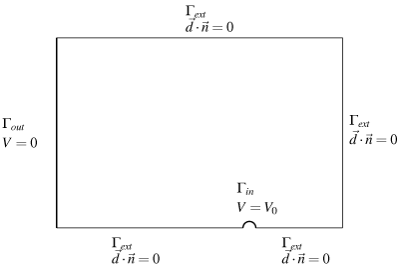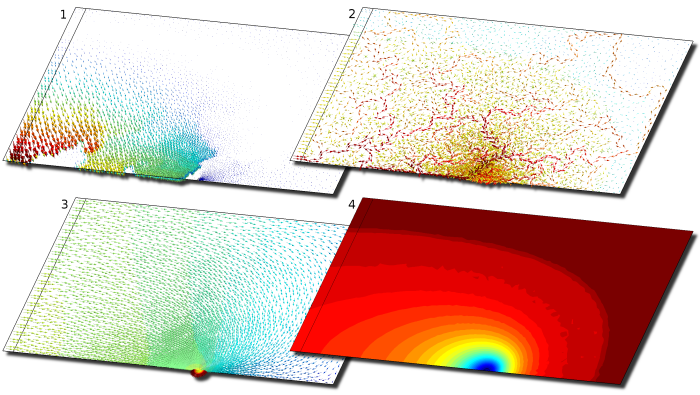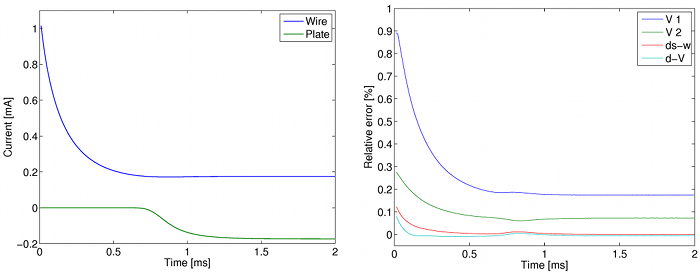This is an old revision of the document!
Electrostatic painting
Problem description
Electrostatic painting is one of the applications I studied during my PhD. I started from a mathematical model by François Henrotte and used this nice coupled problem to test different potential and mixed formulations of electrostatic equations.
The original device is made of a set of thin wires parallel to a grounded iron plate. The wires are brought to a negative potential of high amplitude. The strong electric field around the wires causes the acceleration of free electrons which move away from the cathode and combine with atoms. The negative ions drift toward the anode, i.e. the grounded plate, due to Coulomb forces. The system is described by classical electrostatic equations coupled with a transient convection equation, ∇⋅→d=ρi∇×→e=0→d=ε0→e∂tρi+∇⋅(μi→eρi)=0 where μi is the ion mobility.
The convection equation is integrated in time with an unconditionally stable implicit scheme and the electrostatic equations are solved at each time step. I implemented several electrostatic formulations to analyse their influence on the charge conservation: electric scalar potential (→e=−∇V), electric vector potential formulation with source field (→d=→ds+∇×→w) and mixed formulation (→d-V). In particular, electrostatic and magnetostatic mixed formulations have the same stability problems as Stokes equations when the shape functions do not satisfy the Babuska-Brezzi inf-sup condition. Fortunately, a stabilization technique developed in fluid mechanics (Pressure-Stabilized Petrov-Galerkin) works fine with Maxwell's equations as well.
References
[1] F. Henrotte. Calcul des efforts électromagnétiques et de leurs effets dans des structures quelconques. PhD Thesis, Université de Liège, 2000



